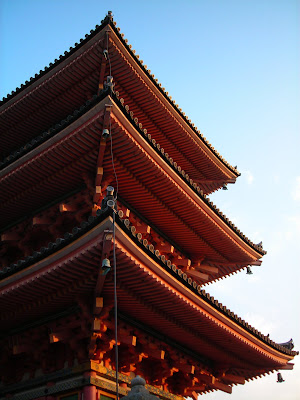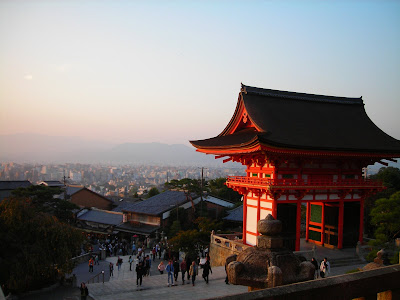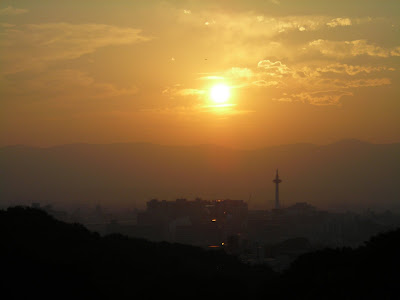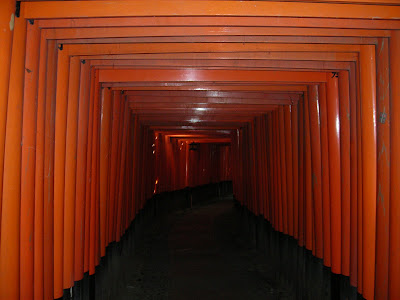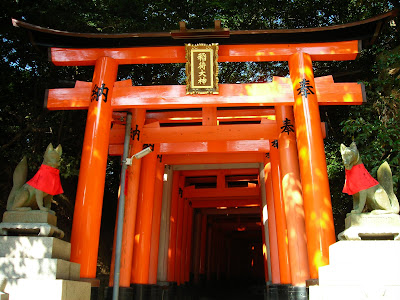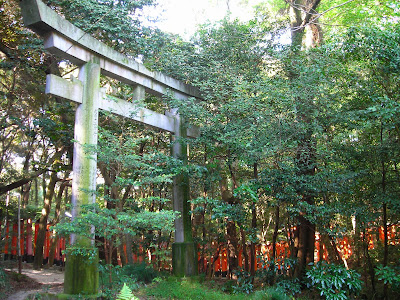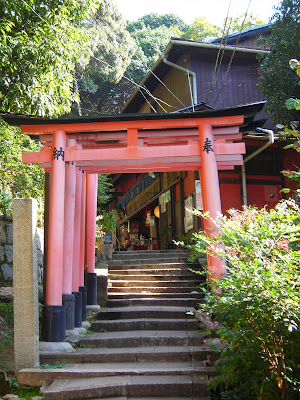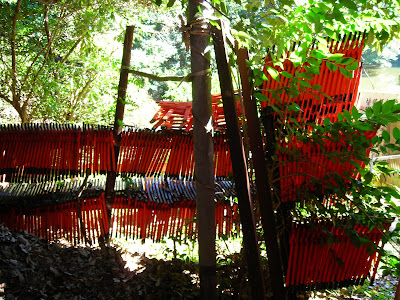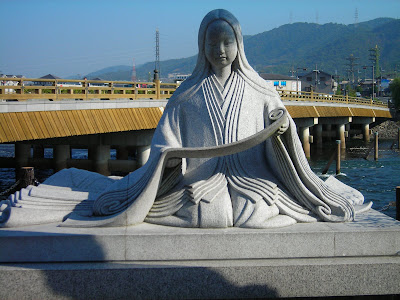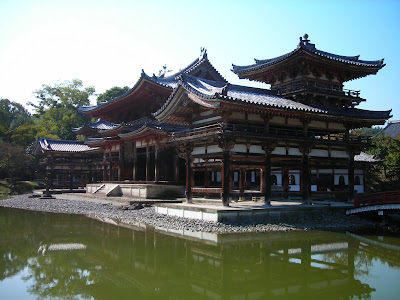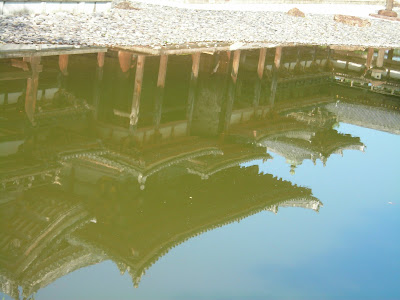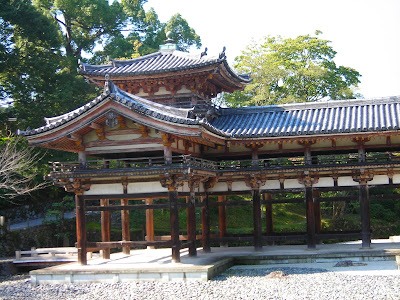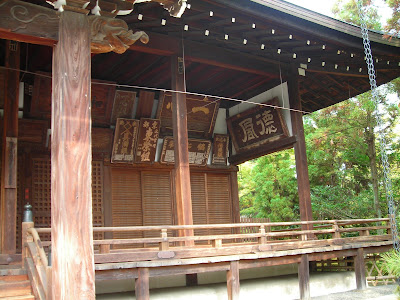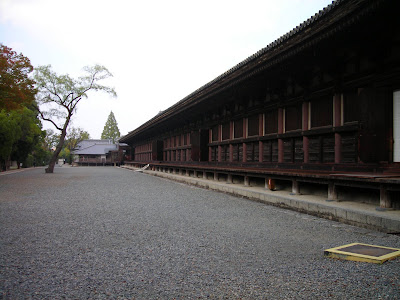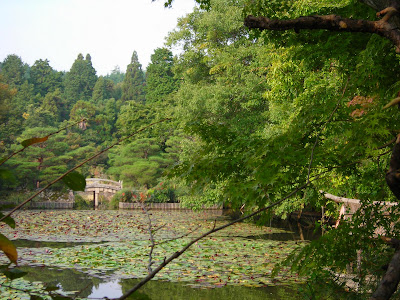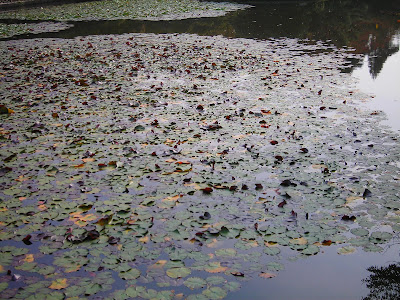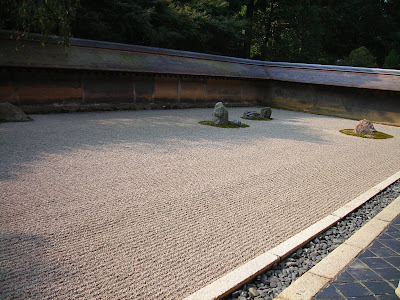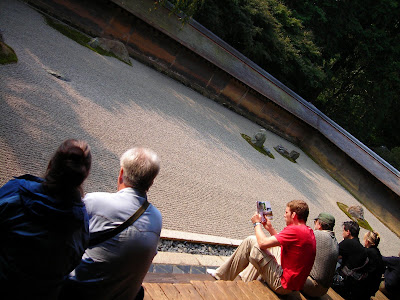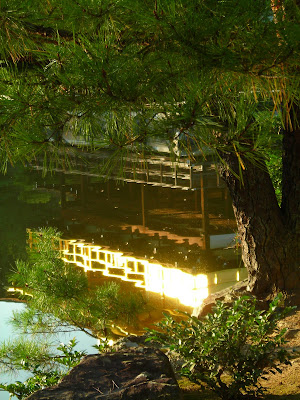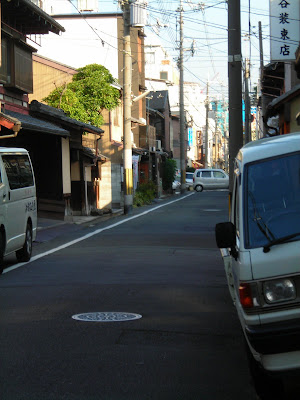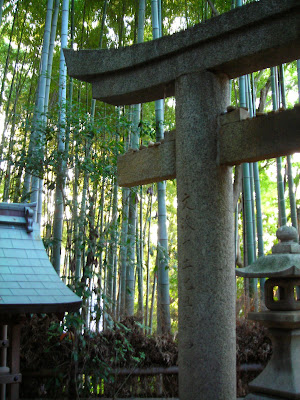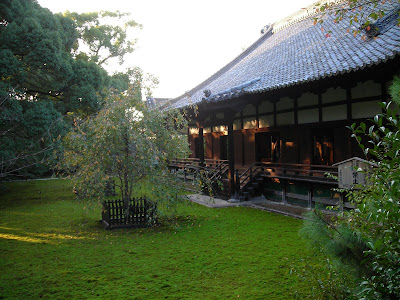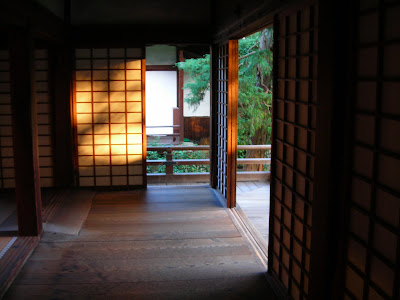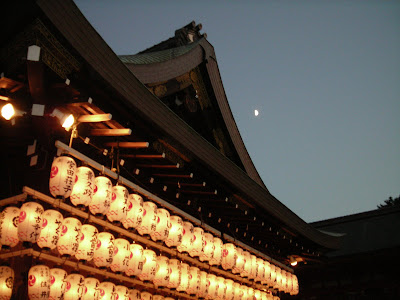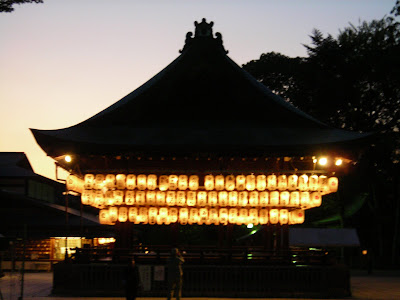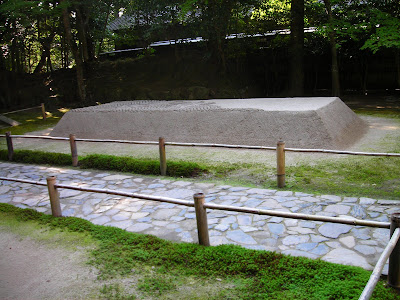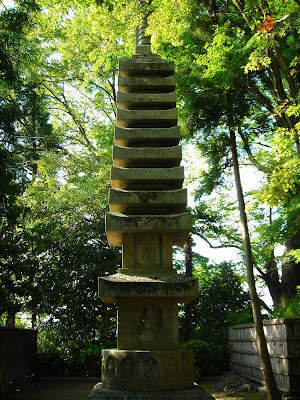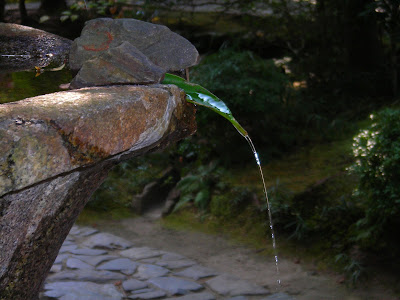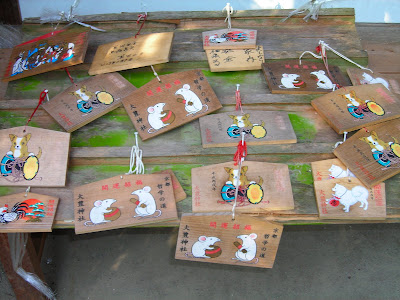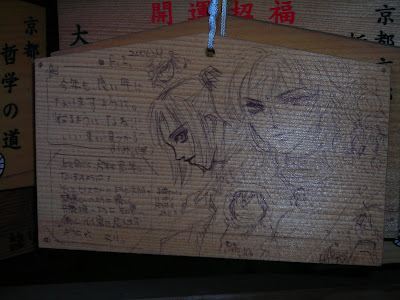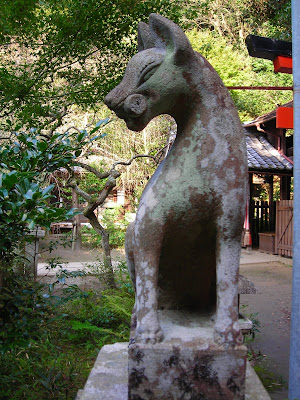From this point on, my memories get a little fuzzy. However, I believe that after visiting the Gosho, I went back to the Philosopher's path to see a few more sites. However it happened, I ended up visiting Honen-in. This was a temple recommended in Lonely Planet as a pleasant, quieter place. Indeed, it turned out to be very beautiful, and considerably less crowded than the more famous locales. Of course, "less crowded" is all relative. There were still quite a number of tourists there, but it was really lovely and definitely worth a trip. Also, unlike a lot of Buddhist temples in Japan, this one had free entry! Yay.
As you can see, the temple was located in a forest. It was all very green.
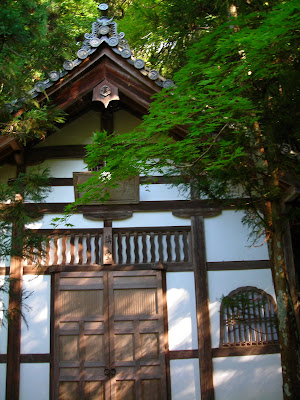
Like Ginkakuji, this temple had a number of sand garden features as well, as you can see below. I guess they get remodeled all the time. You can't see as well from this picture, but there are images drawn on top of these mounds of sand.
The temple was set back in the forest, and you had to go up this long path to get there. I wasn't sure at first if I'd found the right place, since all the signage was in Japan. But it seems I was correct, and this was indeed Honen-in. There were a number of "mini-stupas" like the one below, at various locations within the grounds.
There were a lot of really cool things at this temple--just small details. Here is a wooden knocker of some sort. I'm not sure exactly what it's for, but look how deeply worn in it is! Hard to imagine how many times it must have been hit.
There was this really beautiful little water fountain type situation set up, and I took a picture at just the right moment. It's one of my favorite pictures from my trip. I loved how they used a leaf in it.
Back behind the temple a bit, there was a statue of the Buddha and the imprint of his feet. Note all the pictures on his feet--these signs were actually supposed to be there; they were signs like the bump in his head, etc. In particular, you can see the wheel of the law in the center of the footprint, along with a lot of other auspicious signs.
After looking over the temple thoroughly, I went back out down the path. There was a side path going off in the opposite direction, and so I followed it for a bit. It led to a Japanese graveyard--the Japanese don't bury their dead, they cremate them, but these "graveyards" are places of memorial, grouped up by different families. People brings offerings here as well. As you can see, it was a beautiful day.
After leaving Honen-in, I wandered down the Philosopher's Path til I reached this shrine. I don't think I'd even read about it in a guidebook--it was just a complete coincidence I decided to go to this one, when I saw a signpost for it on the Path. It was a really great decision, because it was an amazing shrine. According to an English label I saw, it was called Otoyo Shrine.
As you can see, it was a kind of animal shrine. All the offering plaques had cute little animals on it, and the statues were all of various kinds of animals as well. I saw two foreign tourists as I was going up the path to the shrine, but once I got there it was virtually deserted. One of those really enchanting moments.
The statues were really neat, as I said. Here's a monkey, just doing his thing.
These mice are apparently quite famous, because they are in place of the typical dog guardian figures. This shrine has mice instead--some kind of legend connected with the area, apparently. The statues are really well done.
One thing that immediately became obvious was that the shrine must have been very popular with the local children. Virtually every single one of the offering plaques had some kind of anime decoration, as in the one above, or it was written in sloppy children's handwriting. It was really neat to see all of the drawings the kids had done.
A more traditional animal statue--the fox.
As you can see from the above picture, the shrine was not at all well kept up. But it was even more romantic because it wasn't... I try not to have this silly "romantic" view of Japan, but when places like this keep popping up, it's hard to resist!

